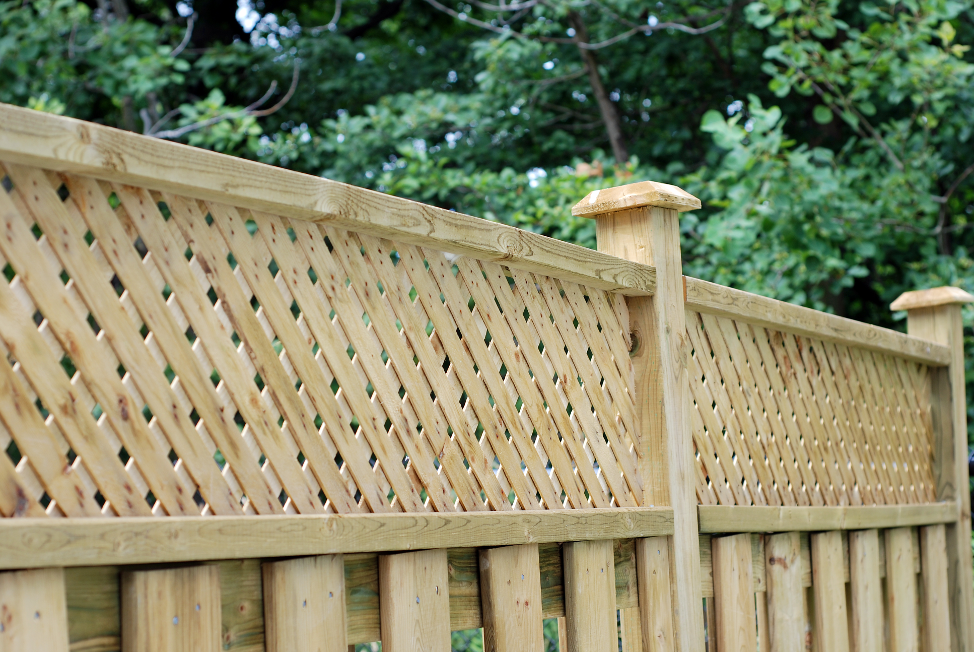All Categories
Featured

Among the most prominent options, timber, plastic, and aluminum each offer special benefits and downsides. Below's a breakdown of the pros and cons of these 3 usual fence products.
Timber Fencing. Timber fence has actually been a timeless choice for house owners as a result of its all-natural beauty and adaptability.
Pros:. Aesthetic Allure: Timber supplies a traditional and warm look that complements a range of architectural designs. Adjustable: It can be painted, discolored, or cut right into one-of-a-kind layouts to match individual preferences. Economical: Initially, timber fence can be a cost effective choice compared to various other materials. Eco-Friendly: Timber is a sustainable resource and can be sustainably sourced. Disadvantages:. High Maintenance: Wood requires routine securing, staining, or painting to prevent rot, insect damages, and weathering. Durability Problems: Without correct treatment, timber can warp, split, or degeneration with time, especially in locations with high humidity. Shorter Lifespan: A timber fencing normally lasts 10-20 years, depending on the kind of timber and level of maintenance. Wood is perfect for those who value a conventional appearance and agree to devote to its upkeep.
Vinyl Fence. Plastic is a modern, low-maintenance fencing choice that has actually grown in appeal recently.

Pros:. Reduced Maintenance: Vinyl does not require paint, discoloration, or sealing and can be conveniently cleaned up with soap and water. Weather condition Resistant: It stands up to harsh climate condition without decaying, rusting, or warping. Resilient: Vinyl fences can last 20-30 years with marginal upkeep. Range of Styles: Readily available in several colors, layouts, and textures, some vinyl options imitate the appearance of timber. Disadvantages:. Higher Upfront Price: Plastic fence can be much more costly originally compared to wood. Brittleness in Cold Weather: In severe chilly, plastic might split or come to be weak. Limited Repair works: Individual panels can be difficult to replace, requiring careful matching to the existing fence. Vinyl is finest suited for property owners seeking a sturdy, low-maintenance remedy with modern-day visual appeals.
Aluminum Fencing. Aluminum fencing is a durable and light-weight alternative, usually chosen for its modern look and flexibility.
Pros:. Rust-Resistant: Aluminum doesn't corrosion, making it a superb selection for damp or wet climates. Low Upkeep: Needs marginal maintenance and is easy to clean. Resilient: While light-weight, aluminum is solid sufficient to withstand many ecological problems. Long Life expectancy: Can last a number of decades without considerable wear or wear and tear. Range of Styles: Offers a sophisticated and smooth appearance, commonly utilized for decorative or ornamental purposes. Disadvantages:. Higher Expense: The initial investment for aluminum fence is more than timber or plastic. Much Less Personal privacy: Light weight aluminum fencings are frequently created with open pickets, making them less reliable for personal privacy. Prone to Dents: Although sturdy, aluminum can be nicked by solid influences. Light weight aluminum is suitable for those looking for a fashionable, lasting alternative that requires very little care.
Making the Right Option. Each fencing product-- timber, plastic, and light weight aluminum-- offers unique benefits and downsides. Your decision must rely on your particular concerns, such as budget plan, upkeep preferences, environment, and visual goals:
If you enjoy a conventional appearance and do not mind regular upkeep,Select wood. Select vinyl if you want a low-maintenance, weather-resistant fence with modern-day allure. Choose light weight aluminum if you focus on resilience, rust resistance, and a sleek design. By evaluating these disadvantages and pros, you can choose a fence material that improves your property while meeting your useful needs.
Latest Posts
Discover Special Auto Repair Offers in Chicago at Montclare Auto Repair
Published en
1 min read
Explore Affordable Auto Repairs with Montclare’s Limited-Time Service Specials
Published en
1 min read
Unlock Your Financial Partner at WyHy – Top Benefits for Your Financial Success
Published en
1 min read
More
Latest Posts
Discover Special Auto Repair Offers in Chicago at Montclare Auto Repair
Published May 27, 25
1 min read
Explore Affordable Auto Repairs with Montclare’s Limited-Time Service Specials
Published May 25, 25
1 min read
Unlock Your Financial Partner at WyHy – Top Benefits for Your Financial Success
Published May 25, 25
1 min read